 W
WThe black wallaroo, also known as Bernard's wallaroo or Woodward's wallaroo, is a species of macropod restricted to a small, mountainous area in Arnhem Land, Northern Territory, Australia, between South Alligator River and Nabarlek. It classified as near threatened, mostly due to its limited distribution. A large proportion of the range is protected by Kakadu National Park.
 W
WThe brush-tailed mulgara, previously the mulgara Dasycercus cristicauda is a medium sized carnivorous Australian marsupial species weighing approximately 100 g. The brush-tailed mulgara is sexually dimorphic with males being much larger than females. Their body length is 12 to 17 cm, and tail length is 6 - 10 cm. They store fat in their tail which at times can be over 1.6 cm wide at the base.
 W
WThe Bushveld horseshoe bat is a species of bat in the family Rhinolophidae.
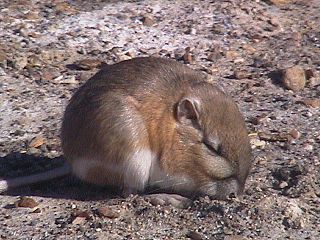 W
WThe chisel-toothed kangaroo rat is a species of rodent in the family Heteromyidae.
 W
WThe Coiban mastiff bat is a species of bat in the family Molossidae. Its range extends from Chiapas in southern Mexico to Mato Grosso in Brazil, including Peru, Ecuador, Venezuela, Panama, Costa Rica and El Salvador. The taxonomic status of the populations in Central America is uncertain. The species is insectivorous and is known from a variety of forest habitats at elevations from near sea level to 1300 m.
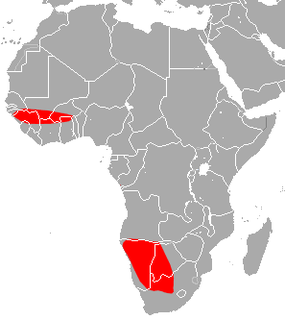 W
WDent's horseshoe bat is a species of bat in the family Rhinolophidae. It is found in Angola, Botswana, Ghana, Guinea, Guinea-Bissau, Namibia, South Africa, and Zimbabwe. The bat's natural habitats are dry savannah country and it roosts in caves and other subterranean habitats.
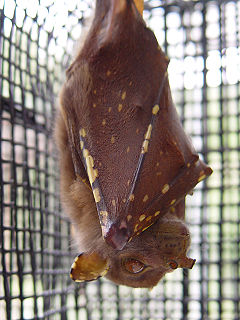 W
WThe eastern or Queensland tube-nosed bat is a megabat in the family Pteropodidae that lives in north-eastern Australia. N. robinsoni is one of the few species in Pteropodidae that roosts solitarily. They get their common name from their raised tubular nostrils which is unlike most other species in the family. They are a deep brown with gray heads and sparse yellow spotting.
 W
WEscalera's bat is a European bat in the genus Myotis, found in Spain, Portugal, and far southern France.
 W
WThe Ethiopian dwarf mongoose, also known as the desert dwarf mongoose or Somali dwarf mongoose, is a mongoose native to East Africa, particularly Ethiopia, Kenya, and Somalia.
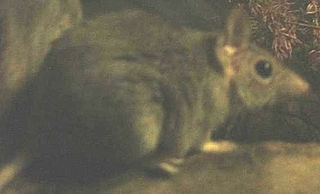 W
WThe fawn antechinus is a species of small carnivorous marsupial found in northern Australia. It is the only Antechinus to be found in the Northern Territory and has a patchy, restricted range. Kunwinjku of western Arnhem Land call this animal Mulbu, as they do many rodents. The spelling is given as Mulbbu on the Bininj Kunwok website
 W
WThe fiery squirrel is a rodent in the family Sciuridae. The taxon is endemic to the area south of the Orinoco River in the state of Bolívar, Venezuela.
 W
WThe Galápagos fur seal breeds on the Galápagos Islands in the eastern Pacific, west of mainland Ecuador.
 W
WThe giant forest hog, the only member of its genus, is native to wooded habitats in Africa and is generally considered the largest wild member of the pig family, Suidae; however, a few subspecies of the wild boar can reach an even larger size. Despite its large size and relatively wide distribution, it was first described only in 1904. The specific name honours Richard Meinertzhagen, who shot the type specimen in Kenya and had it shipped to the Natural History Museum in England.
 W
WThe giant kangaroo rat is an endangered species of heteromyid rodent endemic to California.
 W
WThe Goeldi's marmoset or Goeldi's monkey is a small, South American New World monkey that lives in the upper Amazon basin region of Bolivia, Brazil, Colombia, Ecuador, and Peru. It is the only species classified in the genus Callimico, and the monkeys are sometimes referred to as "callimicos".
 W
WThe Cross River gorilla is a subspecies of the western gorilla. It was named a new species in 1904 by Paul Matschie, a mammalian taxonomist working at the Humboldt University Zoological Museum in Berlin, but its populations were not systematically surveyed until 1987.
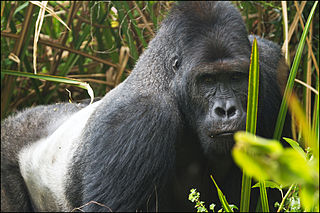 W
WThe Eastern Lowland Gorilla or Grauer's gorilla is a subspecies of eastern gorilla endemic to the mountainous forests of eastern Democratic Republic of the Congo. Important populations of this gorilla live in the Kahuzi-Biega and Maiko National Parks and their adjacent forests, the Tayna Gorilla Reserve, the Usala forest and on the Itombwe Massif.
 W
WThe gracile naked-tailed shrew is a species of mammal in the family Soricidae. It is found in Burundi, Gabon, Kenya, and Uganda. Its natural habitat is swamps.
 W
WThe grey-crowned Central American squirrel monkey is a subspecies of the Central American squirrel monkey. Its range is restricted to the Pacific coast of central Costa Rica. The northern end of its range is the Rio Tulin and the southern end of its range is the Rio Grande de Terraba. South of the Rio Grande de Terraba, it is replaced by the black-crowned Central American squirrel monkey, S. oerstedii oerstedii. Populations are very fragmented, and the subspecies does not occur in all locations within its general range. It is the subspecies of Central American squirrel monkey seen in Manuel Antonio National Park in Costa Rica.
 W
WHildegarde's shrew is a species of mammal in the family Soricidae. It is found in Burundi, Cameroon, Central African Republic, Republic of the Congo, Democratic Republic of the Congo, Ethiopia, Kenya, Rwanda, and Tanzania. Considered by some authorities to be a subspecies of Crocidura gracilipes, it is now recognised as a separate species, with a chromosome number of 2n = 52. This is one of three species of small mammal named by the British zoologist Oldfield Thomas in honour of anthropologist Hildegarde Beatrice Hinde.
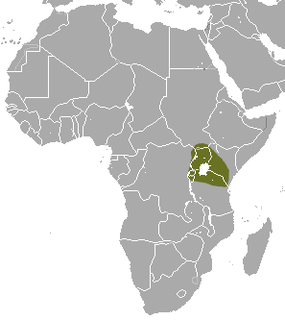 W
WJackson's shrew is a species of mammal in the family Soricidae. It is found in Burundi, Democratic Republic of the Congo, Kenya, Rwanda, South Sudan, and Uganda. Its natural habitats are subtropical or tropical moist lowland forest, subtropical or tropical moist montane forest, and heavily degraded former forest.
 W
WThe Kaibab squirrel is a tassel-eared squirrel that lives in the Kaibab Plateau in the Southwest United States, in an area of 20 by 40 miles. The squirrel's habitat is confined entirely to the ponderosa pine forests of the North Rim of Grand Canyon National Park and the northern section of Kaibab National Forest around the town of Jacob Lake, Arizona.
 W
WThe white-bellied woolly mouse opossum is a small pouchless marsupial of the family Didelphidae. It was formerly assigned to the genus Micoureus, which was made a subgenus of Marmosa in 2009. The specific epithet was given in honour of Constance Sladen, wife of the naturalist Percy Sladen. She funded the 1902 expedition which collected the type specimen.
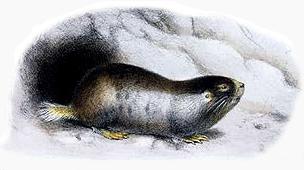 W
WThe Namaqua dune mole-rat is a species of rodent in the family Bathyergidae.
 W
WThe narrow-faced kangaroo rat is a species of rodent in the family Heteromyidae. It is endemic to California in the United States.
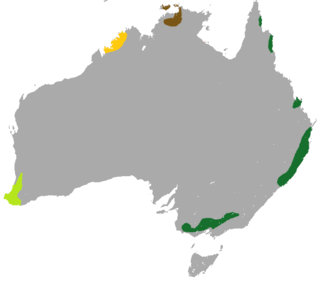 W
WThe northern brush-tailed phascogale, also known as the northern brush-tailed wambenger or northern brush-tailed mousesack is a species of marsupial in the family Dasyuridae. It is endemic to northern Australia.
 W
WThe Omilteme cottontail is a cottontail rabbit found only in the state of Guerrero, Mexico in the mountain range of Sierra Madre del Sur. Belonging to the family Leporidae, it is one of fourteen species in the genus Sylvilagus, a genus restricted to the New World. The Omilteme cottontail is considered one of the most endangered rabbit species in the world and is only known and been described by very few specimens.
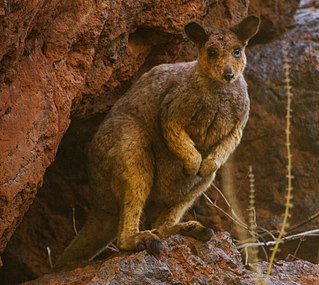 W
WRothschild's rock-wallaby – sometimes known as the Roebourne rock-wallaby, is a species of macropod found in Western Australia, in the Pilbara district and the Dampier Archipelago. It is not currently considered to be threatened, but is at risk from the red fox.
 W
WThe Santa Marta porcupine is a rodent in the family Erethizontidae. It is known from dry forests on the lower slopes of the Sierra Nevada de Santa Marta and Serranía del Perijá mountains of northern Colombia, at altitudes below 500 and 1100 m, respectively, and intervening lowlands, and may also be present in nearby parts of Venezuela. It has been described as a subspecies of C. prehensilis, although the latter may be a species complex. Its karyotype has 2n = 74, FN = 82.
 W
WSclater's guenon, also known as Sclater's monkey and the Nigerian monkey, is an Old World monkey that was first described by Reginald Innes Pocock in 1904 and named after Philip Sclater. It is an arboreal and diurnal primate that lives in the forests of southern Nigeria. It should not be confused with the closely related species, the white-throated guenon, which occurs in Nigeria and Benin. Sclater's guenon was formerly classified as a subspecies of the red-eared guenon.
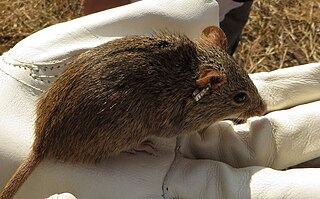 W
WThe single-striped grass mouse or single-striped lemniscomys is a species of rodent in the family Muridae.
 W
WThe smoky white-toothed shrew is a species of mammal in the family Soricidae. It is endemic to Kenya. Its natural habitat is subtropical or tropical moist montane forests. It is threatened by habitat loss.
 W
WThe Somali wild dog is a subspecies of African wild dog native to the Horn of Africa. It is similar to the East African subspecies, but is smaller, has shorter and coarser fur and has a weaker dentition. Its colour closely approaches that of the Cape subspecies, with the yellow parts being buff, rather than bright orange, as is the case in the East African subspecies.
 W
WThe southern giant pouched rat is a species of rodent in the family Nesomyidae. It is distributed in the savannah of East and Southern Africa.
 W
WThomas's nectar bat is a bat species from South and Central America.
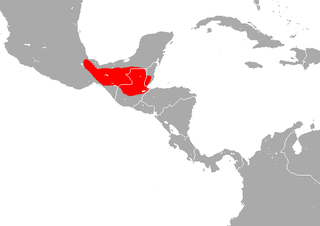 W
WThomas's sac-winged bat is a species of sac-winged bat in the family Emballonuridae.
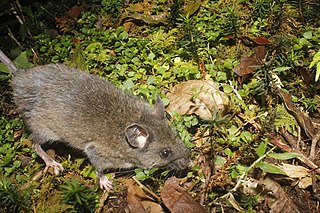 W
WThe zempoaltepec is a species of rodent in the family Cricetidae.